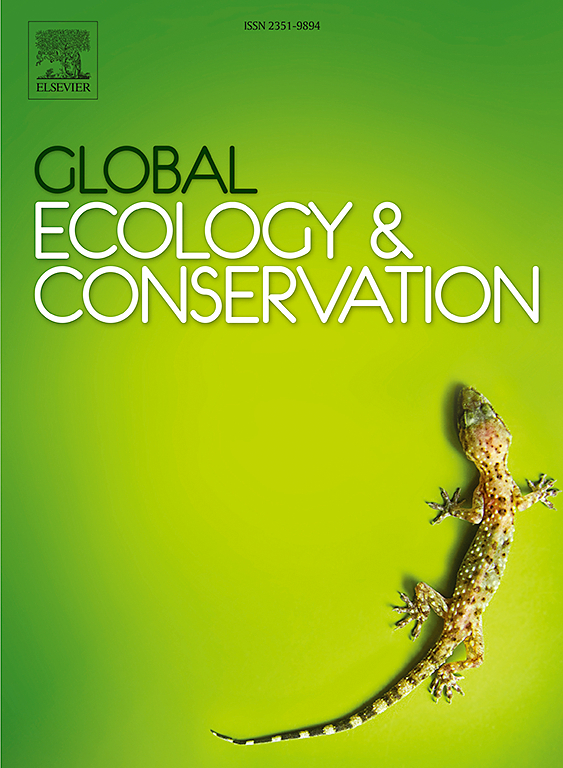Multi-scale habitat selection and constraints of a small Asian elephant population in Yunnan Nangunhe National Nature Reserve, China
IF 3.5
2区 环境科学与生态学
Q1 BIODIVERSITY CONSERVATION
引用次数: 0
Abstract
The Asian elephant (Elephas maximus) populations in Yunnan Nangunhe National Nature Reserve (NNNR) represents the smallest known population in China and geographically isolated from other Asian elephant populations, potentially leading to their gradual extinction over time. Therefore, multi-scale habitat selection and habitat suitability analyses were conducted in this study to understand the key factors influencing the distribution of this population by employing camera-trap monitoring, unmanned aerial survey, and species distribution models. The results showed that elephant groups and solitary elephants exhibited strong selectivity for most habitat factors above 800 m, with elephant groups demonstrating higher vegetation requirements than solitary elephants. There are relatively few areas in NNNR where the habitat suitability for elephant groups and solitary elephants was good and high, primarily located in valley areas near rivers. The primary factors limiting their distribution were the presence of complex terrain and roads in large spaces surrounding the study area. Therefore, facilitating movement and genetic exchange between Asian elephants in this area and other populations by constructing corridors is challenging. Furthermore, based on the findings, it is advisable to adopt ex situ conservation to improve the population development of Asian elephants in NNNR. The insights gained from this research provide valuable guidance for the effective conservation and management of Asian elephants, contributing to their long-term survival and the preservation of biodiversity in the region.
云南南云河国家级自然保护区小亚洲象种群的多尺度生境选择与约束
云南南云河国家级自然保护区(NNNR)的亚洲象种群是中国已知最小的种群,地理上与其他亚洲象种群隔离,可能导致它们随着时间的推移逐渐灭绝。为此,本研究采用摄像机-陷阱监测、无人机调查和物种分布模型等方法,开展多尺度生境选择和生境适宜性分析,了解影响该种群分布的关键因素。结果表明,象群和独居象对800 m以上的生境因子具有较强的选择性,象群对植被的需求高于独居象。象群和象群生境适宜性较高的地区相对较少,主要分布在河流附近的河谷地区。限制其分布的主要因素是研究区周围大空间中复杂地形和道路的存在。因此,通过建造通道来促进该地区亚洲象与其他种群之间的运动和基因交流是具有挑战性的。在此基础上,建议采取迁地保护措施来改善NNNR亚洲象种群的发展。本研究为亚洲象的有效保护和管理提供了有价值的指导,有助于亚洲象的长期生存和保护该地区的生物多样性。
本文章由计算机程序翻译,如有差异,请以英文原文为准。
求助全文
约1分钟内获得全文
求助全文
来源期刊

Global Ecology and Conservation
Agricultural and Biological Sciences-Ecology, Evolution, Behavior and Systematics
CiteScore
8.10
自引率
5.00%
发文量
346
审稿时长
83 days
期刊介绍:
Global Ecology and Conservation is a peer-reviewed, open-access journal covering all sub-disciplines of ecological and conservation science: from theory to practice, from molecules to ecosystems, from regional to global. The fields covered include: organismal, population, community, and ecosystem ecology; physiological, evolutionary, and behavioral ecology; and conservation science.
 求助内容:
求助内容: 应助结果提醒方式:
应助结果提醒方式:


